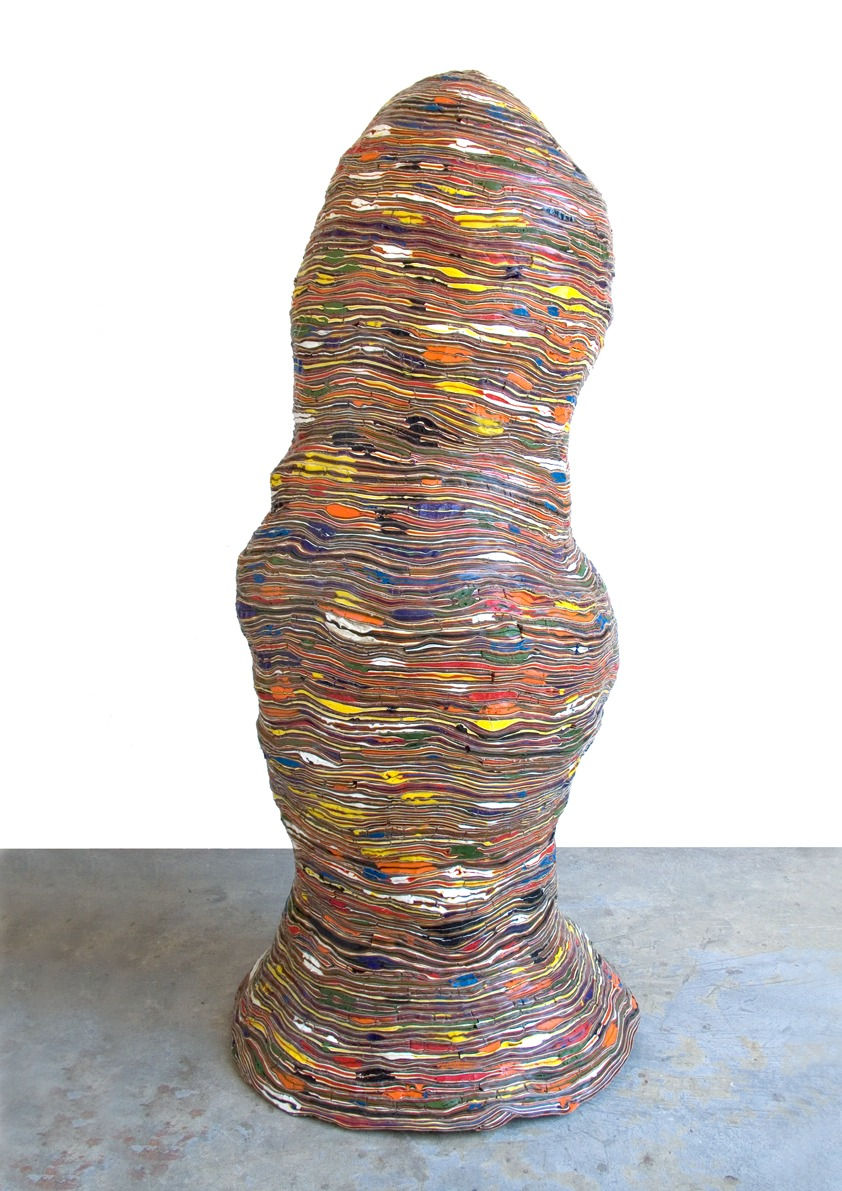Monica De Mitri Painting and Drawing spaces.
- Radmila Urošević

- Jul 28
- 4 min read
Updated: Aug 3
By Radmila Urošević
#2 Installation-paintings or a painting to be installed…
Monica states that the act of painting happens when she paints the canvas and the paper, but then it is installed on the canvas. The work in paper that she considers as a sculpture. When she started to make these artworks with her English best friend, they questioned themselves at length on how to define this work. They have decided that the most suitable definition was precisely Installation painting. Her artworks have a three-dimensionality that for many aspects reminds the sculpture and in fact the paper is shaped, almost sculpted, to give it volume so for this the references to the sculpture are very evident. Isn’t it a painting that would come to sculpt space? In fact, sculpting space rather than drawing it is maybe the right sentence to use to depict Monica De Mitri’s creations.


The reflection about painting and space, and the relationship between Monica’s work and space is pretty much fusional. The surrounding space is completing her paintings. That allows the shape to escape from the frame and creates a new picture depending on the exhibition space. As she explains “The surrounding space is an integral part of the work because it interacts with the installation”.
Creating curvy volumes with paint on strips of paper seems to be in contradiction with the lines of the canvas. In Monica De Mitri’s opinion the canvas is only a medium. She doesn’t feel like she must respect its physical limits. She enjoys overcoming the limits and going beyond the edges. But what about the curvy forms she creates? The artist explains that she loves curved lines “because they are sinuous, and it is as if they were a slow and continuous movement that dialogues with the surrounding space. A slow sliding without crashing.”.
Her creation process isn’t serial. To Monica De Mitri the artistic gesture begins by cutting of the paper that she previously paints. She uses as tradition requires, brushes and acrylic paint. “Dexterity is essential and to be even more specific the cut is carried out strictly by hand with only the support of a scissors.”, she says. Monica doesn’t rely on machines to make the strips of paper. Effectively, she in her mind that would take off the soul of the artwork. The artist is attached to the aura of the piece of art.
As Walter Benjamin writes “the singular value of the “authentic” work of art finds its basis in the ritual[1]”.
Indeed, the artist uses the same ritual every time, but this ritual drives her to new shapes and different artefacts each time. Creating while listening to some music, Monica De Mitri’s visual poetry, is seen and felt by the viewer. The rythm of the folded painted paper reminds us of a body distorted and moving in space and time.
She explains that: “Each work is independent from the other because each work is a unique creation and unrepeatable fruit of different moods”.

Monica De Mitri is very much inspired by plenty of artists, but won’t position herself into a specific category towards History of Art. She prefers the viewer to have the freedom to choose and think about where to place her style regarding art movements and their history. She doesn’t like “labels”. Nevertheless, she has studied art and loves artists such as: Mark Rothko, Yayoi Kusama, Olafur Eliasson and his installation at the Tate Modern. Or Antonio Canova, Anish Kappor AES+F and Bill Viola. As she says herself: “Basically, I love all the artists that make me dream with open eyes, because this is what my artworks are made of… Dreams and I always hope people can see this in my creation.”

Now, let’s have a quick look on her last solo exhibition in Italy. It took place in the city where the artist lives, Mantua, at the Casa di Rigoletto, from June 5th to 7th, 2021. “It was a long time since I was looking for the opportunity to exhibit in my city because most of the important events of my artistic career so far have taken place abroad or in other Italian cities.”, says the artist. The exhibition has been curated by Carlo Micheli and promoted by the City of Mantua. Monica De Mitri has exhibited more than twenty artworks created between 2015 and 2021. To finish, let’s end on this artist sentence: “I think there is a great desire for for beauty in this bizarre period as a ransom for the long lockdown that has forced us to confront our fragility.”.
Below some views of the exhibition Senzatitolo at the Casa di Rigoletto, June 2021.



[1] Walter Benjamin, L’œuvre d’art à l’époque de sa reproductibilité technique (1935), Paris, Allia, 2013, p-p.27-28. Translated from french : « la valeur singulière de l’œuvre d’art « authentique » trouve son fondement dans le rituel […] ».




Comments